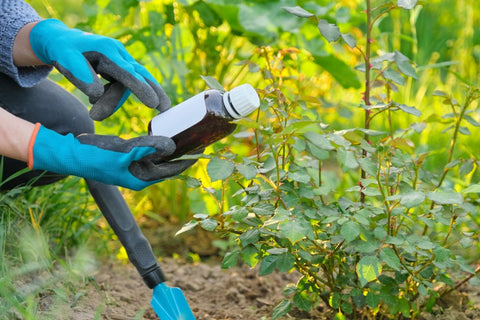Growing your own strawberries can be a rewarding experience, but it can also be frustrating when your strawberry plant fails to produce fruit despite your best efforts. In this blog, we will explore the major reasons why your strawberry plant may not be bearing fruit and provide simple hints on how to care for your plant more effectively. Before delving into the details, it's important to understand the types of strawberry plants and their characteristics.

Types of Strawberry Plants
There are three main types of strawberry plants based on their flowering habits:
June-Bearing Strawberries: These plants produce one large crop of fruit from June to early July.
Ever-Bearing Strawberries: Ever-bearing types yield strawberries in early summer and early fall. They start bearing fruit around the same time as June-bearing strawberries but continue to produce throughout the summer and into the fall.
Day-Neutral Strawberries: Day-neutral strawberries produce fruit throughout most of the growing season, offering a longer harvest period compared to the other two types.
Now, let's explore why your strawberry plants may not be bearing fruit and how to address these issues.
Watering Issues
Strawberry plants, like most plants, require the right amount of water. Overwatering can lead to crown rot, yellowing leaves, stunted growth, and reduced productivity. On the other hand, insufficient watering can also hinder fruit production. It's crucial to maintain a balance and provide your plants with adequate but not excessive water.
Poor Fertilizer Application
Fertilizers contain essential nutrients for plant growth, but using them incorrectly can harm your strawberry plants. Consider the following when applying fertilizers:
Understand why you are applying fertilizer to your plants.
Determine the appropriate growth stage for fertilization.
Choose the right type of fertilizer based on your plant's needs.
Follow a consistent routine for fertilizer application.
These guidelines will help you apply fertilizers effectively without overdoing it.
Pests and Diseases Infestation
Pests and diseases can harm your strawberry plants by draining nutrients or causing root rot. Regularly inspect your plants for signs of pest damage or disease, and take appropriate measures to control them.
Inadequate Sunlight
Strawberry plants need sufficient sunlight to thrive. Insufficient sunlight can slow down essential chemical reactions required for fruit production. Ensure that your plants receive the necessary amount of sunlight for optimal growth.
The Perfect Soil Type
The nutrient composition and drainage of your soil can significantly affect your strawberry plant's productivity. Ideal soil for strawberries should be well-drained and have a pH between 5.5-7.0. Conduct a soil test before planting to determine if your soil requires amendments or fertilization.
How to Care for Strawberry Plants

To ensure a bountiful strawberry harvest, pay close attention to your plants and follow these care tips:
Apply compost or organic fertilizer using the appropriate method and measurements.
Use pesticides to eliminate pests that may harm your garden.
Ensure your soil is compatible with the type of strawberry you want to grow by conducting a soil test.
Regularly weed your garden to prevent pest and disease infestations and maintain soil nutrients.
Growing strawberries in your own garden can be a delightful experience, but challenges such as temperature fluctuations, pests, soil issues, and improper care can hinder fruit production. Taking preventive measures, conducting soil tests, practicing routine weeding, and applying fertilizers correctly can enhance the fruitfulness of your strawberry plants. With patience and care, you can enjoy the sweet and scrumptious rewards of homegrown strawberries.









